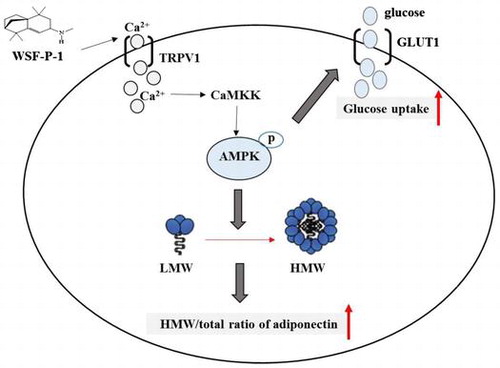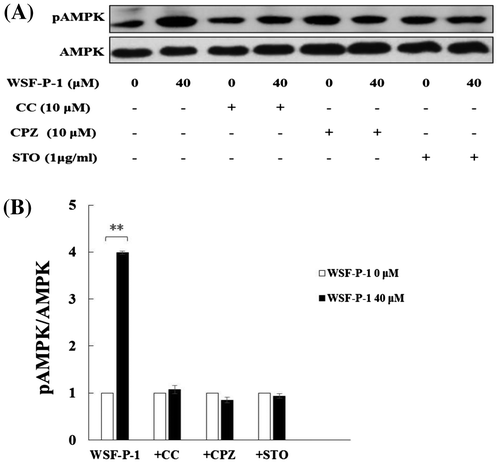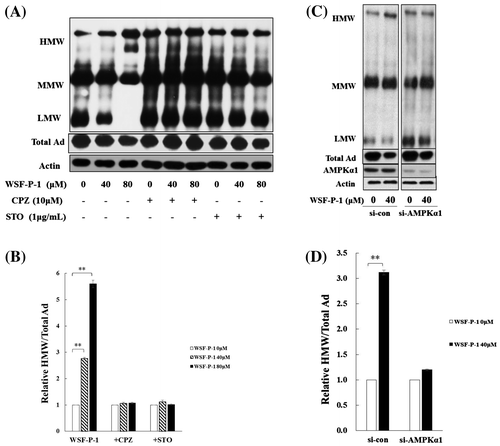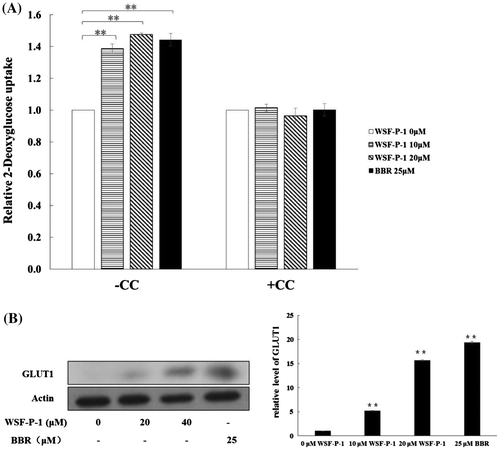Figures & data

Fig. 1. WSF-P-1 activates AMPK by increasing intracellular calcium concentrations in 293T cells.

Fig. 2. WSF-P-1 activates AMPK via the Ca2+-dependent CaMKK signaling pathway.

Fig. 3. WSF-P-1 promotes adiponectin multimerization in 3T3-L1 adipocytes.

Fig. 4. WSF-P-1 inhibits preadipocyte differentiation.

Fig. 5. WSF-P-1 promotes glucose uptake.

